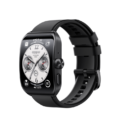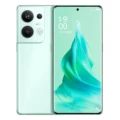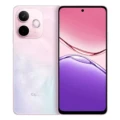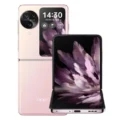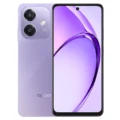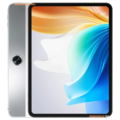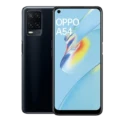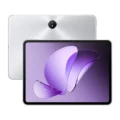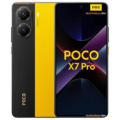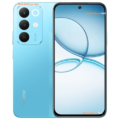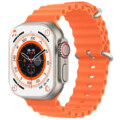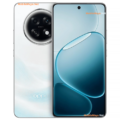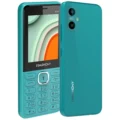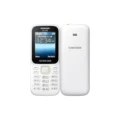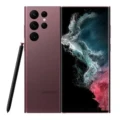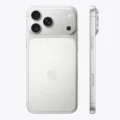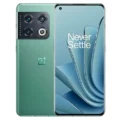Price List: Under Tk.5,000 | Tk.5001-10000 | Tk.10001-15000 | Tk.15001-20000 | Tk.20001-30000 | Tk.30001-40000 | More Mobiles
- Home
- All Mobile
- Oppo
- Oppo F17 Pro
Oppo F17 Pro
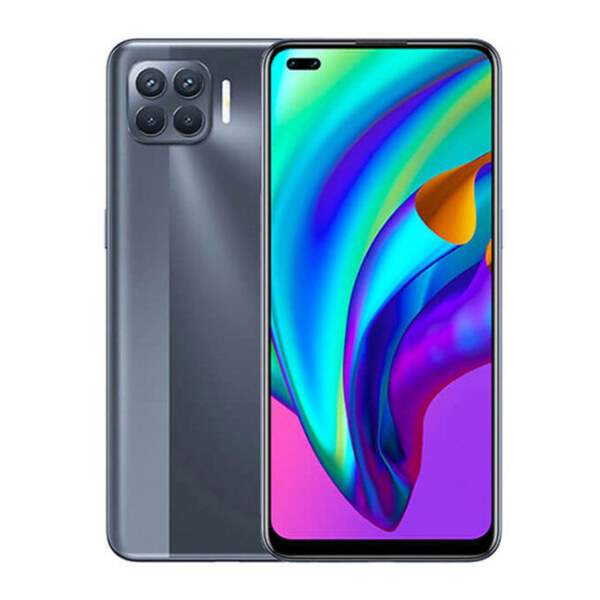

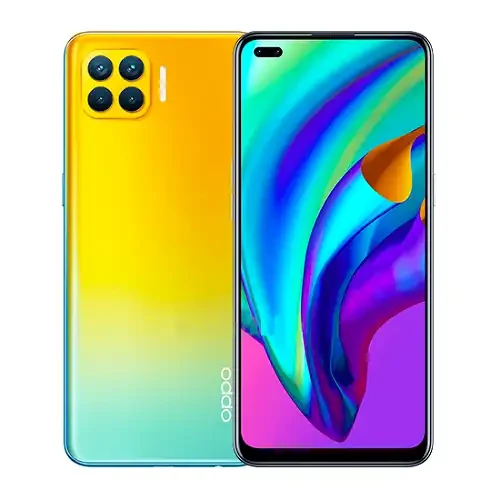
Specifications
Price in Bangladesh
| Official | 8GB 128GB ৳25,990 |
| Unofficial Unofficial prices and phones are available only non authorized shops. The device does not come with an official warranty in Bangladesh. | 8GB 128GB 24,000 |
General
| Device Type | Smartphone |
| Model | CPH2119 |
| Announced | September, 2026 |
| Released | September, 2026 |
| Status | Available |
Hardware & Software
| Operating System OS => Every computer system run on a base software called Operating System (OS). Operating System controls all basic operations of the computer (such as smartphone, PDAs, tablet computers and other handheld devices). The Operating System allows the user to install and run third party applications (apps), apps are used to add new functionality to the device. | Android |
| OS Version | v10 |
| Chipset Chipset is a group of integrated circuits designed to perform one or a more dedicated functions, often with real time computing constraints, Popular smartphones are equipped with more advanced embedded chipsets that can do many different tasks depending on their programming. | MediaTek Helio P95 |
| CPU CPU (Central Processing Unit) mostly known as processors, CPU processes instructions in order to carry out certain functions that make your device operate properly. Processors are often described as the brain of computers, smartphones and tablets, Smartphones and tablets rely on processors to carry out their every task, Processors are an incredibly important factor in selecting any type of computing device, including your smartphone. | Octa core (2.2 GHz, Dual core, Cortex A75 + 2 GHz, Hexa Core, Cortex A55) |
| CPU Cores | 8 Cores |
| Architecture | 64 bit |
| Fabrication | 12 nm |
| GPU GPU (Graphics Processing Unit) is a single-chip processor designed to rapidly manipulate and alter memory to accelerate the creation of images in a frame buffer intended for output to a display, This includes things such as lighting effects, object transformations, and 3D motion. | PowerVR GM9446 |
| RAM (Memory) RAM (Random Access Memory) is a type of computer memory that can be accessed randomly, any byte of memory can be accessed without touching the preceding bytes that allows information to be stored and accessed quickly from random locations. RAM is the most common type of memory found in computer systems, smartphones, tablets and other electronic devices. | 8 GB |
Design
| Dimensions | 160.1 x 73.8 x 7.5 mm (6.30 x 2.91 x 0.30 in) |
| Weight | 164 g (5.78 oz) |
| Colors |
Magic Blue, Matte Black, Metallic White |
| Build Material | Glass front (Gorilla Glass 3), plastic back |
Display
| Display Type Display Technology => A number of display technologies and types used in mobile phones => TFT (Thin Film Transistor), IPS (In-Place Switching), OLED (Organic Light Emitting Diode), AMOLED (Active-Matrix Organic Light-Emitting Diode), Super AMOLED (an even advanced version of AMOLED), Resistive Touchscreen (Resistive touchscreens contain two layer of conductive material with a very small gap between them which acts as a resistance), Capacitive Touchsceen (Capacitive touchscreen technology consists of a layer of glass coated with a transparent conductor) | Super AMOLED |
| Size | 6.43 inches (16.33 cm) |
| Resolution | 1080x2400 px (FHD+) |
| Aspect Ratio | 20:9 |
| Pixel Density Pixel Density (PPI) is refers to the concentration of pixels on a particular display, measured in pixels per inch (ppi). Pixel density is calculated by dividing the diagonal pixel resolution of a display by its diagonal size, higher pixel density better display quality. | 409 ppi |
| Screen to Body Ratio | 84.5 % |
| Touch Screen | Capacitive Touchscreen, Multi-touch |
| Brightness | 800 nits |
| Refresh Rate | 60 Hz |
| HDR 10 / HDR+ support |
Rear Camera
| Camera Setup | Quad |
| Main Camera | 48 MP |
| Specifications | f/2.4, (depth) |
| Second Camera | 8 MP |
| Specifications | f/2.4, (depth) |
| Third Camera | 2 MP |
| Specifications | f/2.4, (depth) |
| Fourth Camera | 2 MP |
| Specifications | f/2.4, (depth) |
| Sensors Sensors are electronic components that detects and responds to some type of input from the physical environment. The specific input could be light, heat, motion, moisture, pressure and location, The output is generally a signal that is converted to use in computing systems, a location sensor, such as a GPS receiver is able to detect current location of your electronic device. |
S5KGM1, ISOCELL Plus |
| Autofocus | Phase Detection autofocus |
| OIS | |
| Flash Flash Light => There is commonly two types of flash lights are used in camera mobile phones, LED Flash (LED flash offers lower power consumption with drive circuitry that takes up very little room, LEDs can be strobed faster than any other light source), Xenon Flash (xenon flash produces an extremely intense full-spectrum white light for a very short duration) | LED Flash |
| Image | 8000 x 6000 Pixels |
| Settings | Exposure compensation, ISO control |
| Zoom | 10 x Digital Zoom |
| Shooting Modes | Continuous Shooting, High Dynamic Range mode (HDR) |
| Aperture | f/1.7 |
| Camera Features |
Auto Flash, Face detection, Touch to focus |
| Video | 4K@30fps, 1080p@30fps |
| Video Recording Features | 3840x2160, 1920x1080, 1280x720 |
| Video FPS | 240 fps |
Front Camera
| Camera Setup | Dual |
| Secondary |
16 MP, f/2.4, (wide), 1/3" 2 MP, f/2.4, (depth) |
| Aperture | f/2.4 |
| Video | 1080p@30fps |
| Video FPS | 30 fps |
Battery
| Battery Type Battery Type => Cell phones run on various kinds of batteries depending on the manufacturer, phone size or shape and features. There are basically four types of cell phone batteries => Lithium Polymer, Lithium Ion, Nickel Metal Hydride and Nickel Cadmium. | Li-Ion (Lithium Ion) |
| Placement | Non-removable |
| Capacity Battery Capacity is a measure (typically in Amp-hr) of the charge stored by the battery, and is determined by the mass of active material contained in the battery. The battery capacity represents the maximum amount of energy that can be extracted from the battery under certain conditions. | 4015mAh |
| Quick Charging | VOOC, v4.0, 30W |
| USB Type-C | USB Type-C 2.0 |
Storage
| Storage Type | UFS 2.1 |
| Storage Capacity | 128 GB |
| USB OTG |
Network
| 2G Network |
GSM 850 / 900 / 1800 / 1900 |
| 3G Network |
HSDPA 850 / 900 / 2100 |
| 4G Network |
1, 3, 5, 8, 38, 40, 41 |
| SIM SIM (Subscriber Identity Module) is a small card that contains mobile network subscriber's account information. This allows the phone using the card to attach to a mobile network. The SIM card is most commonly associated with GSM and UMTS mobile networks. Moving a SIM card from one phone to another allows a subscriber to switch mobile phones without having to contact their mobile network carrier. SIM cards can also be used by a phone to store limited amounts of data, such as phone numbers and text messages. | Standard SIM |
Data
| GPRS GPRS (General Packet Radio Service) is a packet oriented mobile data service on the 2G and 3G cellular communication system's global system for mobile communications (GSM), Generally, GPRS is used for the purpose of wireless data transfer, such as sharing pictures and videos or browsing the Internet via a mobile phone connection. | |
| EDGE EDGE (Enhanced Data GSM Environment) is a wireless network technology generally considered the next step in the 2G network offers data transfer rates up to four times faster than ordinary GSM networks, Generally, EDGE is used for the purpose of wireless data transfer, such as sharing pictures and videos or browsing the Internet via a mobile phone connection. | |
| Speed | HSPA, LTE |
| Web Browser Web Browser => a web browser is a software application used to locate, retrieve and display content on the World Wide Web, including Web pages, images, video and other files, The primary function of a web browser is to render HTML, the code used to design or markup webpages. | HTML5 |
Messaging
| SMS SMS (Short Messaging Service) is a text messaging service component of phone, Web, or mobile communication systems. It uses standardized communications protocols to allow mobile phone devices to exchange short text messages over the networks. | Yes |
| MMS MMS (Multimedia Messaging Service) is a standard way to send messages that include multimedia content (audio clips, video clips and images) to and from mobile phones over wireless networks using the WAP protocol. | |
| Email Email (Electronic Mail) is a system for receiving, sending, and storing electronic messages, Similar to a letter, email is text messages that may contain files, images, or other attachments sent via the internet to a recipient by using applications and software prograps. An email address is required to receive email, and that address is unique to the user. | Yes |
| IM IM (Instant Messaging) is an exchange of text messages through a software application, it enable you to create a kind of private chat room with another individual in order to communicate in real time over the Internet. | Yes |
Connectivity
| Bluetooth Bluetooth is a wireless communications technology for exchanging data between mobile phones, headsets, computers and other network devices over short distances without wires, Bluetooth technology was primarily designed to support simple wireless networking of personal consumer devices. | 5.1, A2DP, LE, aptX HD |
| Wi-fi Hotspot | |
| Infrared Infrared connectivity is an old wireless technology used to connect two electronic devices. It uses a beam of infrared light to transmit information and so requires direct line of sight and operates only at close range. | |
| USB | USB Type-C 2.0, OTG |
| GPS GPS The Global Positioning System is a satellite-based radio navigation system, GPS permits users to determine their position, velocity and the time 24 hours a day, in all weather, anywhere in the world, In order to locate your position, your device or GPS receiver must have a clear view of the sky. | GPS, GLONASS, GALILEO, BDS, QZSS |
| NFC NFC (Near field communication) is a set of standards for smartphones and similar devices to establish peer-to-peer radio communications with each other by touching them together or bringing them into proximity, usually no more than a few inches. |
Media
| FM Radio | FM radio |
| Loudspeaker | Yes |
| 3.5mm Jack | Yes |
Sensors & Security
| Fingerprint Sensor | |
| Fingerprint Sensor Position | On-screen |
| Light Sensor | Light sensor, Proximity sensor, Accelerometer, Compass, Gyroscope |
| Face Unlock | Yes |
More
| Made By | China |
| SAR | 1.44 W/kg (head) 1.41 W/kg (body) |
Performance Tests
PROS
- Super AMOLED display
- Slim and lightweight design
- Dual selfie camera
- 30W VOOC fast charging
- Good camera performance
- In-display fingerprint sensor
- Dedicated microSD slot
CONS
- No 5G support
- Dated Android 10 version
- Average gaming performance
- Plastic back may feel less premium
- No high refresh rate (60Hz only)
Oppo F17 Pro Specifications
The Oppo F17 Pro is a sleek and elegant mid-range smartphone designed for style-savvy users who prioritize camera features and an immersive AMOLED display.
| Feature | Details |
|---|---|
| Model Name | Oppo F17 Pro (CPH2119) |
| Release Date | September 2020 |
| Market Availability | Available |
| Official Price | ৳25,990 (8GB + 128GB) |
| RAM & Storage | 8GB RAM + 128GB UFS 2.1 Storage (expandable) |
Display and Design
The Oppo F17 Pro sports a 6.43-inch Super AMOLED display with a resolution of 1080 x 2400 pixels, offering rich colors, deep blacks, and crisp visuals. With a 20:9 aspect ratio, 409 PPI, and 800 nits brightness, it performs well even under direct sunlight.
Design-wise, it’s ultra-slim at just 7.5mm thick and weighs only 164g, making it incredibly comfortable in hand. The phone features a glass front (Gorilla Glass 3) and a matte plastic back, available in three elegant shades: Magic Blue, Matte Black, and Metallic White. It boasts an 84.5% screen-to-body ratio, making it almost all screen on the front.
Performance and Processor
Under the hood, the Oppo F17 Pro runs on the MediaTek Helio P95 chipset built on a 12nm architecture, coupled with an octa-core CPU (2x Cortex-A75 @ 2.2GHz and 6x Cortex-A55 @ 2.0GHz) and PowerVR GM9446 GPU.
With 8GB RAM and 128GB UFS 2.1 storage, multitasking, social media browsing, and casual gaming are smooth. Though it’s not a high-end gaming phone, it can handle games like Free Fire and PUBG on medium settings. It also supports storage expansion via microSD, making it practical for media-heavy users.
Camera and Video
The Oppo F17 Pro comes with a quad-camera setup on the back:
- 48 MP main sensor (f/1.7)
- 8 MP ultra-wide sensor
- 2 MP mono sensor
- 2 MP depth sensor
The rear cameras support AI Scene Enhancement, HDR, 10x digital zoom, and 4K video recording at 30fps. It performs well in good lighting, especially for portraits and landscapes.
On the front, it features a dual camera setup:
- 16 MP main selfie camera
- 2 MP depth sensor
This setup allows for AI Beautification, portrait bokeh, and 1080p video recording, making it great for selfies, vlogs, or video calls.
Battery and Charging
Equipped with a 4015mAh non-removable Li-Ion battery, the Oppo F17 Pro supports 30W VOOC 4.0 fast charging, which can take the phone from 0% to 100% in about an hour.
While the battery might not be the largest in the segment, the power-efficient AMOLED screen and processor help it last through a full day of moderate use.
Connectivity and 5G Support
The Oppo F17 Pro supports 4G LTE but lacks 5G connectivity, which is understandable for a 2020 mid-range device. It comes with:
- Dual SIM support
- Bluetooth 5.1 with aptX HD
- Dual-band Wi-Fi
- USB Type-C 2.0 with OTG
- GPS with GLONASS, GALILEO, QZSS
- 3.5mm headphone jack
- FM Radio
Additional Features
- In-display fingerprint scanner and Face Unlock
- Android 10 OS with ColorOS skin
- Sensors: Accelerometer, Gyroscope, Proximity, Light Sensor, Compass
- On-screen navigation and Game Mode
- Made in China
- Stereo speakers and voice enhancement features
Reason to Buy
- Sleek and ultra-light design
- Super AMOLED display with vibrant visuals
- Versatile quad-camera setup with 4K video recording
- Dual selfie cameras—rare at this price
- 30W VOOC fast charging
- Smooth multitasking with 8GB RAM
- In-display fingerprint scanner and facial unlock
- Still a reliable daily driver in 2025 for budget-conscious users
Verdict
The Oppo F17 Pro remains a strong choice in the mid-range category, especially for users who value design, display, and camera quality over raw performance. It delivers great value with its Super AMOLED screen, stylish build, and dual selfie cameras—making it ideal for social media enthusiasts, vloggers, and everyday users. While it may not be built for heavy gaming, it excels in daily performance, photography, and fast charging.
FAQ
Q: Is the Oppo F17 Pro still worth buying in 2025?
A: Yes, if you’re looking for a stylish, camera-focused mid-range phone under ৳26,000 with solid features like AMOLED display and dual front cameras.
Q: Does the Oppo F17 Pro support 5G?
A: No, it supports up to 4G LTE only.
Q: Is the storage expandable?
A: Yes, it supports external microSD cards.
Q: How fast is the charging?
A: It comes with 30W VOOC 4.0 fast charging, which charges the battery fully in about an hour.
Q: What version of Android does it use?
A: Android 10 with Oppo’s ColorOS interface.
Alternatives to Oppo F17 Pro
Here are some updated alternatives to consider in 2025:
- Samsung Galaxy A15 5G – For users needing 5G and longer software support
- Realme Narzo 60x – Better chipset with modern design
- Redmi Note 13 – AMOLED display, better gaming performance
- Infinix Zero 30 – Affordable, strong cameras, 5G-ready
- Vivo Y100 – Stylish and slim with similar performance
User Reviews
Disclaimer Note
We do not guarantee that the information of this page is 100% accurate and up to date.

